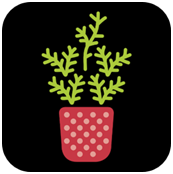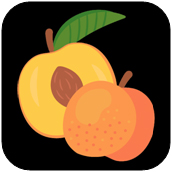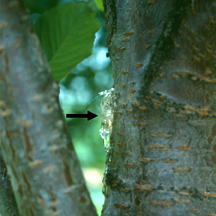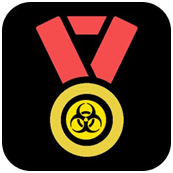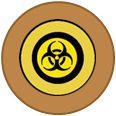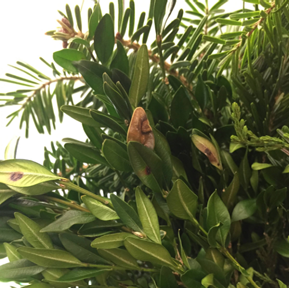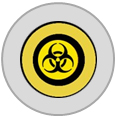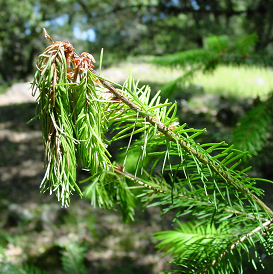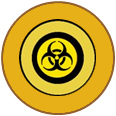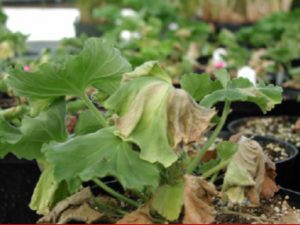 I think it’s safe to say that 2020 was a surreal year for everyone, including those of us here at the Plant Disease Diagnostics Clinic. COVID-19 fundamentally changed how the PDDC conducted business (e.g., check out my March 2020 Monthly Column for details on how the clinic handled sample submissions in 2020). As I look ahead to 2021 (where COVID-19 is still likely to loom large), I am trying to adapt how the PDDC functions so that I can continue to provide timely and informative services to my clients around the state. Below are some thoughts on how the PDDC will function in 2021.
I think it’s safe to say that 2020 was a surreal year for everyone, including those of us here at the Plant Disease Diagnostics Clinic. COVID-19 fundamentally changed how the PDDC conducted business (e.g., check out my March 2020 Monthly Column for details on how the clinic handled sample submissions in 2020). As I look ahead to 2021 (where COVID-19 is still likely to loom large), I am trying to adapt how the PDDC functions so that I can continue to provide timely and informative services to my clients around the state. Below are some thoughts on how the PDDC will function in 2021.
Sample submissions
Submitting samples to the PDDC in 2021 will be similar to 2020. Due to COVID-19 safety concerns, having student hourly help in the clinic likely won’t be possible, and that will limit the number of physical samples that clinic staff (myself and Sue Lueloff, the PDDC molecular diagnostician) will be able to handle. To manage sample volume, I will be requesting that clients initially submit photos of their plants using the PDDC online submission form. Whenever possible, I will provide a disease diagnosis based on these photos. If an accurate diagnosis is not possible, I will then request a follow-up physical sample. As in 2020, in-person submissons will not be allowed, but you will be able to mail samples to the clinic. As always, a completed PDDC sample submission form should accompany each sample.
New in 2021 will be a $20 fee for all digital submissions. If a follow-up physical sample is needed, this digital fee will be credited to any fees charged for processing the physical sample. For a complete listing of PDDC fees, check out the PDDC Clinic Fee Schedule. Note that as a public service, the PDDC will continue to offer free testing for plant diseases of regulatory importance (e.g., Ralstonia wilt, sudden oak death, boxwood blight) and for plant diseases that pose significant risks to Wisconsin’s agricultural economy (e.g., late blight).
Educational Outreach
COVID-19 curtailed PDDC in-person educational outreach in 2020. In 2021, I will be taking greater advantage of distance education platforms like Zoom to provide education. I am planning to partner with county Extension educators across Wisconsin to offer monthly plant disease presentations. The goal is to to give these presentations a local flavor by offering the first opportunity to participate to residents of the host and surrounding counties. Eventually however, participation will be open to residents statewide. On January 13, 2021, I will be partnering with Darrin Kimbler of Extension Iron County for the first of these talks. I’ll be presenting on Early Season Landscape Diseases. Stay tuned for additional details on this presentation and others in the series.
In addition to these monthly presentations, I am willing to entertain requests to provide other talks throughout the state. I really LOVE talking to the public about plant diseases, and I have been beefing up my repertoire of talks in anticipation of getting requests. Check out the Talks for the General Public section of the PDDC website for details on some of my favorite talks.
Also, if there is interest, I am considering sponsoring statewide online plant disease Q&A sessions once a month from May through September. These sessions will be informal discussions of whatever plant disease-related topics are of interest to whomever chooses to participate. I’ll be providing additional details on these sessions as we get closer to the 2021 growing season.
Online content
As always, watch for new and revised University of Wisconsin Garden Facts/Farm Fact/Pest Alerts on the PDDC website. Winter/early spring is definitely a prime time for me to put on my editor’s hat and crank out fact sheets. I currently have fact sheets on container gardening and pruning tomatoes waiting in the wings. I will also continue to post web columns (like this one) each month. In addition, I will be adding a new online feature called Plant Pathology Pointers, which will provide short, timely advise on plant diseases and their management. Watch for these to start early in January 2021.
Have any suggestions?
Finally, I am always looking for new ideas on how to better serve my clients around the state. If you have thoughts that you’d like to share, please contact me at pddc@wisc.edu. To keep up-to-date on PDDC services and educational resources, feel free to follow the clinic on Twitter or Facebook (@UWPDDC). Or alternately, put in a request (by emailing pddc@wisc.edu) to subscribe to the clinic’s listserv, UWPDDCLearn.
Happy Holidays, everyone! Please be safe, and stay healthy!
